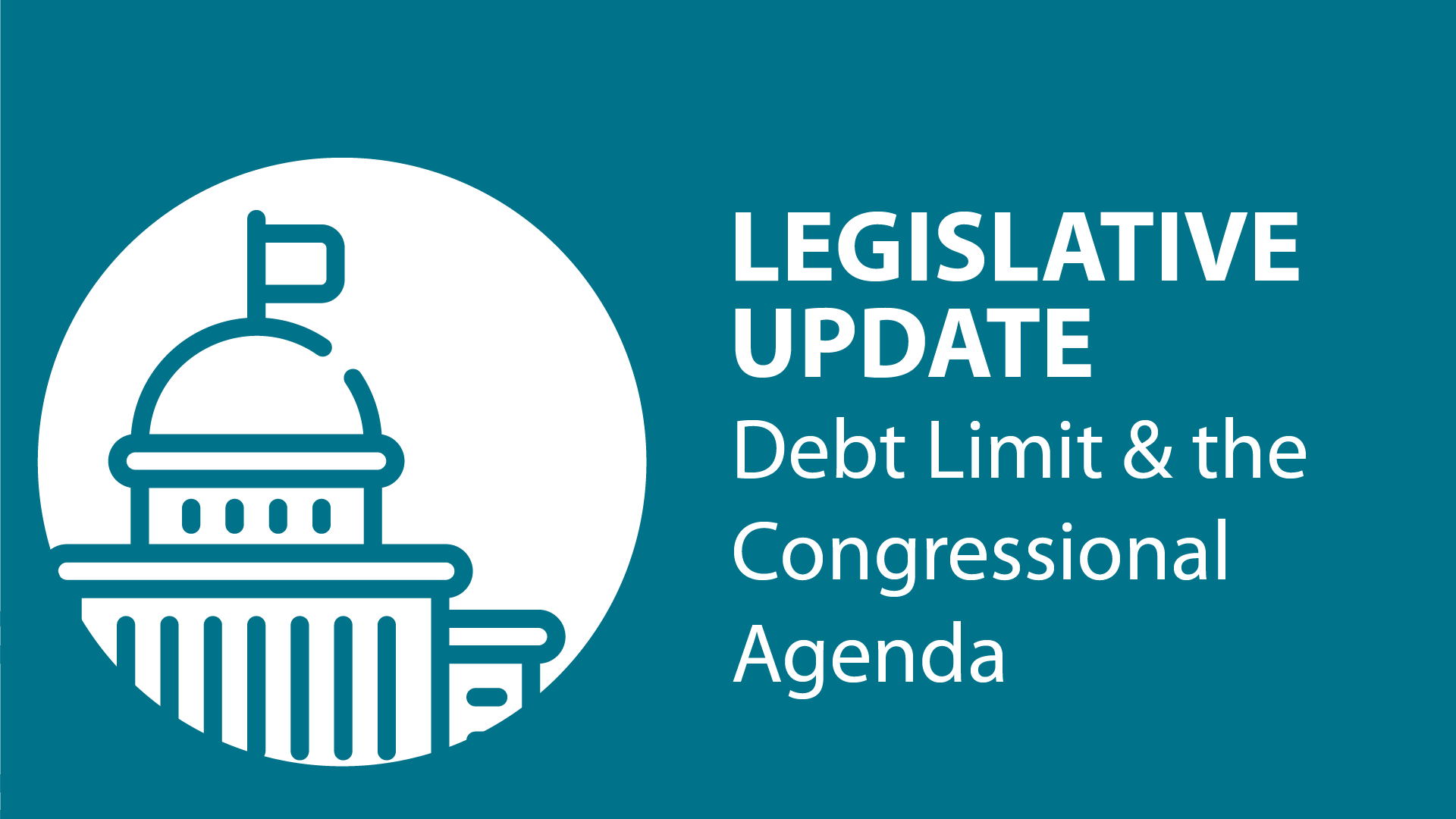This website uses cookies so that we can provide you with the best user experience possible. Cookie information is stored in your browser and performs functions such as recognising you when you return to our website and helping our team to understand which sections of the website you find most interesting and useful.
News
Legislative Update: Debt Ceiling & The Congressional Agenda
The House of Representatives on Oct. 12 voted 219-206 on party lines to pass a short-term increase in the debt ceiling, which will permit the Treasury to borrow money to pay for the next two months of government spending. After punting the debt-limit problem down the road, Democrats are back trying to figure out how to pare down the $3.5 trillion budget reconciliation bill to about $2 trillion in order to come to a final agreement that will gain the support of Sens. Joe Manchin (D-WV) and Kyrsten Sinema (D-AZ). This means topline funding for many priorities and climate provisions may also see further trimming or deletion. Democrats also have a tall order to finalize multiple outstanding policy disagreements within their party. The party is also deliberating between the centrists who would rather cut spending by “doing fewer things well” or doing most things temporarily, where the progressives lean.
To add more pressure, House Speaker Nancy Pelosi says she wants infrastructure and reconciliation done by Oct. 31, when the U.N. Climate Change Conference (COP26) is scheduled to begin in Glasgow. Passing the Build Back Better Act (H.R. 5476) will be crucial for President Joe Biden to show the rest of the nations that the U.S. is committed to the Paris accords and is serious about fighting climate change.
At this time, Sen. Manchin has been more public about his demands and spending priorities, but Sen. Sinema has chosen not make hers public, insisting on negotiating with the White House directly. Regardless of the infighting, the bill remains immensely popular among the Democratic base. It is doubtful that reconciliation will be resolved by the end of the month, as Democrats scramble trying to get centrist support without creating upheaval among progressives. But there has been some movement and tradeoffs being made, giving Democrats a chance at maybe passing something by the end of the year.
EPA Rulemaking To Clarify Pyrolysis and Gasification
The U.S. Environmental Protection Agency (EPA) is considering “potential changes to regulations” to clarify the rules for pyrolysis and gasification facilities, citing growing interest in these chemical recycling technologies as more pilot and commercial-scale facilities using the techniques are built and operated in the U.S. Pyrolysis is a heat treatment process that involves little to no oxygen, EPA says. The agency also explains that processes are potential methods to generate a circular economy around plastics use, where a post-consumer plastic product can be recycled to produce a plastic of equal or similar quality. But a fight is brewing between the chemical industry and some states which provide regulatory exemptions for the practice and environmental groups that claim that that is nothing more than unregulated incineration. Environmentalists counter that the process still involves oxygen, even if in tiny amounts, and therefore must comply with rules to limit emissions of harmful substances. The groups also dismiss pyrolysis-based recycling, arguing that very little material is recycled.
In a Sept. 8 advance notice of proposed rulemaking (ANPRM), the agency provided the background and current state of pyrolysis and gasification in the U.S. Both are chemical recycling technologies that can be used to convert plastic into fuels, chemicals, and other products. “As a result of recent market trends, especially with respect to plastics recycling, the EPA has received several inquiries about regulations under [the Clean Air Act] for solid waste incineration units and the applicability of such regulations to pyrolysis and gasification units for a variety of process and feedstock types,” the agency wrote. The agency found that there is “considerable confusion in the regulated community” regarding which regulations apply to chemical recycling operations.
Back on Aug. 31, 202, EPA proposed revising the definition of “municipal waste combustion (MWC) unit” to remove the reference to “pyrolysis/combustion units” and received several comments that where it appears that there are ongoing questions about the regulation. The agency says the ANPRM “provides an opportunity for the EPA to gather information on the design, types, and sizes of pyrolysis and gasification units, as well as to identify other issues for consideration, including appropriate categorization of pyrolysis and gasification units. ” It is soliciting comments until Nov. 8.


